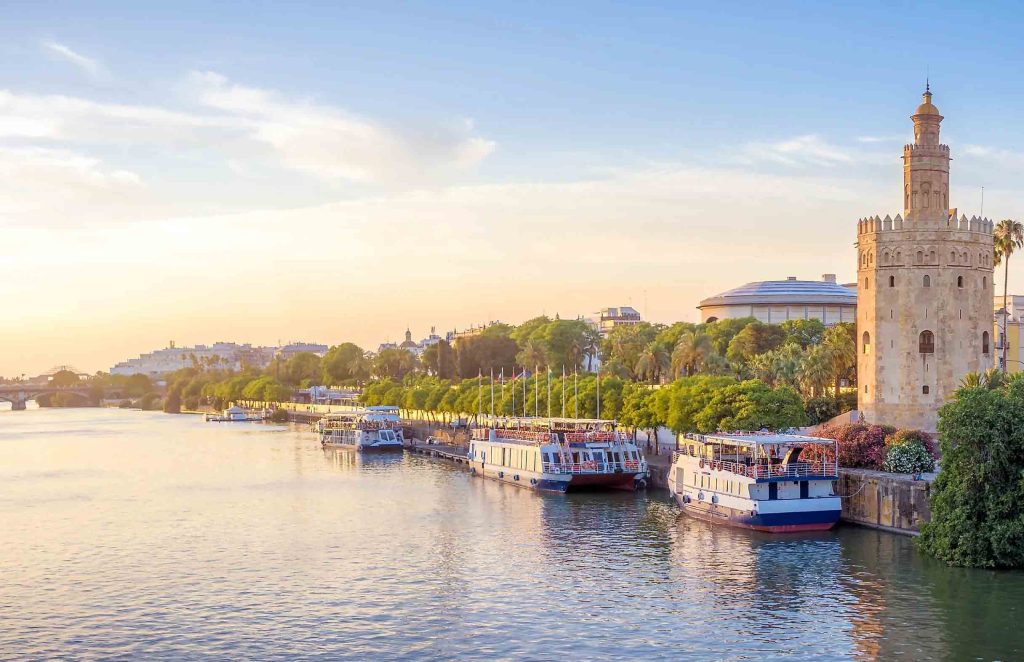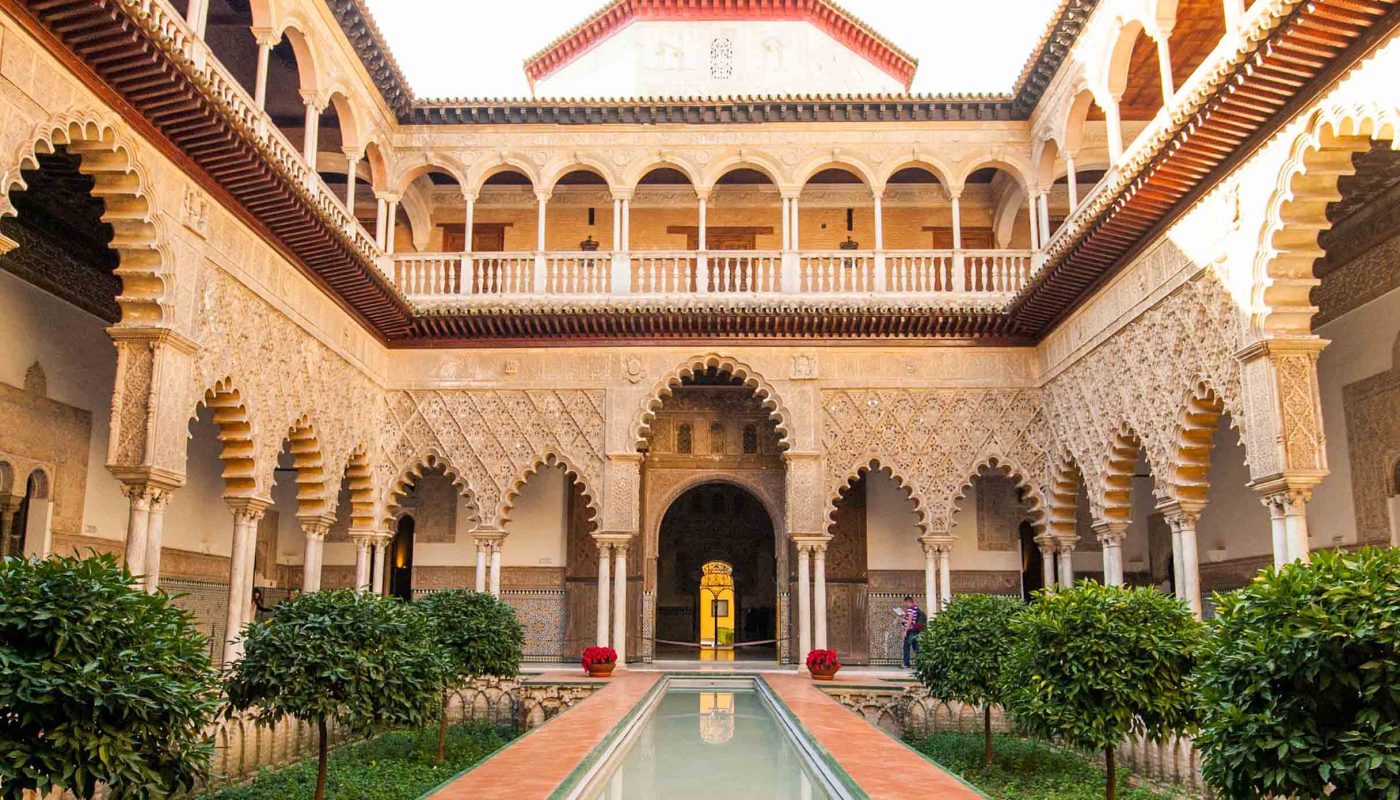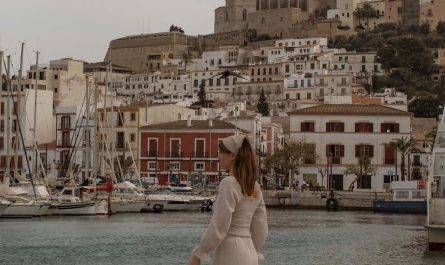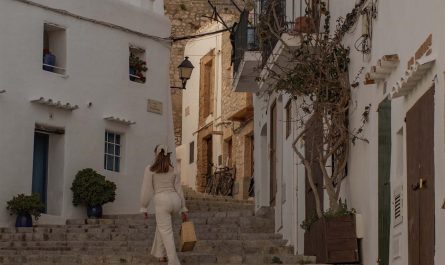The moment I stepped into Seville, I felt as if I had walked into a painting gently brushed by time. The southern Spanish sun bathed the orange-yellow bricks in golden light, while the air was filled with the scent of orange blossoms and coffee. The city’s layers of history and culture lingered like shadows along the narrow streets, quietly waiting to be discovered. Seville is a city meant to be measured by foot—its charm is hidden in the alleyways, in the church bells that echo through early mornings, and in the passionate applause that follows a flamenco performance.
Give Your Tech a Second Life
Give your devices a second life with Gazelle.com
Sell your old tech or buy certified pre-owned phones and laptops — saving money while reducing e-waste.
Smart for you. Good for the planet.
This city is the capital of the Andalusian region of Spain and one of the most Arab-influenced places on the Iberian Peninsula. Known for its rich history and warm spirit, Seville invites exploration through its timeless landmarks and lively corners. Step by step, I’ll take you with me to experience its soul—from ancient palaces to vibrant plazas.
Royal Alcázar: A Thousand Years of Moorish Splendor
My journey began at the Royal Alcázar of Seville (Real Alcázar de Sevilla)—a place that truly takes your breath away. Built during the Moorish rule in the Middle Ages and later expanded by Christian monarchs, this palace blends Islamic, Gothic, Renaissance, and Baroque architecture into a magnificent whole. It’s not just a royal residence, but a living museum of artistry and conquest, where the walls whisper tales of caliphs and kings, conquests and alliances.
The moment I entered the inner courtyard, the intricate Mudejar-style arches captivated me. Every inch of the wall was adorned with elaborate carvings, swirling patterns, and symbolic motifs, like delicate lacework in stone. Sunlight filtered through the arcades, dancing over the blue-and-white tiles like a softly whispered poem. I lingered for a long time in the Patio de las Doncellas, where the reflecting pool mirrored the blue sky and palace columns—like a dream made real. The silence of the space invited quiet contemplation, and I could almost imagine courtiers in flowing robes gliding past centuries ago.
Wandering through each room, I felt the Islamic architectural vision of an “internal paradise” come to life. The interior spaces were cool and shaded, with ceilings of carved wood and walls of intricate tile mosaics. The gardens of the Alcázar were equally mesmerizing—carefully trimmed hedges, elegant fountains, and orange trees formed a serene oasis where whispers of history seemed to echo through the rustling leaves. Birds flitted among the trees, and the trickling of water seemed to hush time itself. It was easy to understand why royalty chose this place as their sanctuary.
Seville Cathedral and La Giralda: Where Faith and History Meet
Leaving the Alcázar, I walked a few minutes to reach the Seville Cathedral (Catedral de Sevilla). This is the third-largest church in the world and the final resting place of Christopher Columbus. Its massive structure dominates the skyline and reflects the city’s ambition during the height of Spain’s imperial power. Built on the site of a former mosque, the cathedral embodies a dramatic transformation from Islamic to Christian space, and its overwhelming grandeur is impossible to ignore.

Towering above it is the Giralda (La Giralda), a former minaret of the mosque that once stood here, later transformed into a bell tower—symbolizing the intersection of Islamic and Christian art. The lower portion retains its Moorish roots, while the upper section is Renaissance in design. I chose to climb the Giralda, which features ramps instead of stairs, originally designed for riders on horseback. As I ascended, the view gradually unfolded. Each level revealed a new layer of the city—terracotta roofs, quiet cloisters, bustling plazas. From the top, I looked out over the red rooftops, church domes, and the tranquil Guadalquivir River flowing in the distance. It was a moment of peace and beauty, with the whole of Seville spread out like a painted tapestry.
Inside the cathedral, a visual feast awaited. Under the 42-meter-high dome, golden altars and religious murals sparkled, enveloping me in sacred grandeur. The vast interior, with its soaring ceilings and rich ornamentation, seemed to lift the soul upward. The tomb of Columbus was particularly striking, a monument to exploration and conquest carried on the shoulders of four heraldic figures. After my visit, I paused in the Courtyard of Orange Trees, where dappled sunlight and citrus fragrance offered my first deep breath of “Andalusian sunshine.” The scent, the light, and the sound of birds made it feel as though time had slowed, letting me fully absorb the sacred and historical power of this place.
Santa Cruz Quarter: A Poetic Stroll Through the Past
Leaving the cathedral behind, I ventured into the Santa Cruz Quarter (Barrio de Santa Cruz). Once a Jewish neighborhood, today it is one of the most charming and historic districts in Seville. Cobblestone alleys wind between white-washed houses with red-tiled roofs, and balconies overflow with colorful geraniums—a testament to vibrant everyday life. Tiny hidden plazas suddenly open up after narrow turns, offering quiet corners with trickling fountains and benches shaded by orange trees. Locals greet each other by name, and the scent of jasmine drifts through the alleyways as if time itself has slowed down.
I walked without a map, allowing myself to get lost in this quiet, poetic maze. At one point, I stumbled upon a small café tucked into a shaded courtyard. I ordered a café con leche, sat on the stone steps, and watched both locals and tourists chat in the shade—an effortless sense of ease that no travel itinerary can ever manufacture. The soft clinking of cutlery, children’s laughter, and the rustle of breeze through bougainvillea created a symphony of everyday magic.
If the Alcázar is Seville’s heart, Santa Cruz is its soul. This enchantment isn’t about grand buildings or famous sites—it’s in the air, in the graffiti hidden behind a corner, in the soft footsteps echoing down ancient lanes. Every wall, every window seems to hold a secret; every turn in the alley reveals a new surprise. It is a place meant not to be rushed, but to be felt.
Plaza de España: A Landmark of Passion
Further south, I arrived at the famous Plaza de España, a magnificent semicircular complex built for the 1929 Ibero-American Exposition. The wide arms of the plaza stretched like a warm embrace. A canal followed the curve of the building, crossed by ornate bridges that looked like they belonged in a fairy tale. Horse-drawn carriages rolled gently over the stone pathways, and families posed for photos with the grand columns as their backdrop.
I arrived in the golden light of afternoon, the whole plaza shimmering. Every step I took revealed vibrant tile work that told the stories of different Spanish provinces. Each tile mural seemed to whisper a tale of heritage and pride. I sat in front of the “Segovia” alcove, watching the central fountain rise and fall in rhythm, serenaded by a soft guitar tune played by a nearby busker. My heart slowly melted into the warmth. There was a unique kind of serenity in that moment—sunshine, water, music, and memory blending seamlessly together.
Nearby, a group of traditionally dressed performers danced flamenco. Their footwork fell like rain, their hands bloomed like flowers, and their eyes burned with fierce intensity. The plaza, once a backdrop, became a living stage pulsing with energy. This, too, was the spirit of Seville—passion and freedom expressed in every movement. The spectators clapped in rhythm, some joining the dance, swept up in the joy. It was no longer just a performance; it was an invitation to feel alive.
Guadalquivir Riverside and Torre del Oro: A Different Rhythm of the City

From Plaza de España, I continued my walk along the Guadalquivir River. This river has long been the city’s lifeline, once a gateway for trade and maritime exploration. I strolled leisurely along its banks, soaking in a quieter side of Seville. Across the water lay the Triana District (Triana), a cultural hub known for its pottery and flamenco heritage.
Standing tall nearby was the Torre del Oro (Golden Tower), a 12th-century Moorish military tower once used to store gold from the Americas. Today, it houses a naval museum, but I was most enchanted by its golden glow at dusk. As the sun dipped low, the tower shimmered as though dusted in gold—a gentle farewell from the day.
Seville at Night: Tapas and the Temptation of Wine
As night fell and the streetlamps flickered on, my steps grew lighter. Seville transforms at night. People pour into plazas, sipping wine, sharing laughter, dancing with strangers. The air itself seems to hum with joy.
I ducked into an old tavern and ordered a sangría and several traditional tapas: marinated olives, fried calamari, tuna with tomato, and the timeless combination of jamón ibérico on toast. The atmosphere buzzed with warmth. An elderly couple chatted with younger patrons nearby, a beautiful mix of generations and backgrounds stitched together in one shared night.
The next morning, I returned to Santa Cruz for one last stroll, alone. The streets were still waking up, the sunlight filtered through orange trees, and a soft breeze whispered through the alleyways. The city’s heartbeat was slow, steady, and intimate.
I realized then that Seville’s magic doesn’t lie in grandeur—it lives in the details. In every stone, every leaf, every dish, and every smile, the city weaves together its soul.
This is Seville—a city worth walking slowly and savoring deeply. From the ancient Royal Alcázar to the fiery Plaza de España, and into the whispering alleys of Santa Cruz, every corner is a memory worth keeping. And if you ever come here, take your time. Let yourself get lost in this radiant moment—that’s the true gift of travel.



